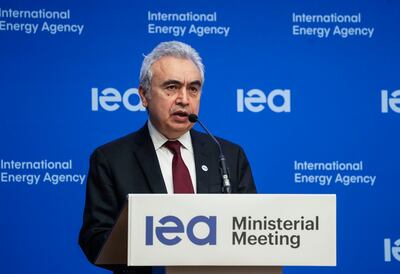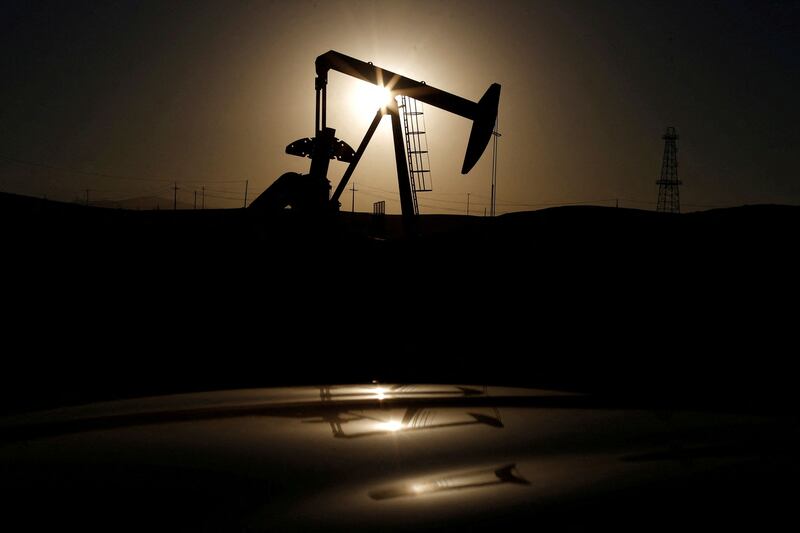Oil prices are hovering at $100 a barrel after trading lower early Friday, following the International Energy Agency co-ordinating a second release from its emergency stockpile that will add 60 million barrels of crude to the market, in addition to millions of barrels set to be released by the US from its crude reserves to ease tight global supplies.
Brent, the global benchmark for two thirds of the world's oil, was trading 0.03 per cent lower at 100.6 per barrel at 3.46pm in the UAE, while West Texas Intermediate, the gauge that tracks US crude, was 0.35 per cent higher at $96.37 a barrel. Brent had dropped to 99.92 per barrel for the first time since mid-March in early trading on Friday and WTI to $95.62.
“Oil prices are slipping … that wouldn't have been something to celebrate only a few months ago but a lot has changed since then,” said Craig Erlam, senior market analyst at Oanda.
“There are still plenty of upside risks to those prices … but 240 million barrels is a substantial move that will help to offset the disruptions we've seen and allow time for US shale and Opec+ to fill the void.”
The IEA's stockpile release includes 120 million barrels of oil, half from the US and half from other members. This is in addition to the US releasing 120 million barrels from its Strategic Petroleum Reserve, which brings the total to 240 million barrels worldwide.

The announcement on Thursday by the IEA marks the second co-ordinated deployment of oil stockpiles. Last month, members of the Paris-based agency agreed to release 61.7 million barrels to the market, with 30 million coming from the US and 2.2 million from the UK.
Oil prices retreated from their 14-year high in mid-March after the US banned Russian energy imports and the UK said it would phase out its purchase of Moscow's oil. Downward pressure on prices increased after Washington said it was releasing 180 million barrels of oil stockpiles from its strategic petroleum reserves over a six-month period, followed by the 31-member nations of the IEA committing to the largest release in the agency’s 47-year history.
“The aggressive tone of the Fed as well as the release of strategic oil reserves from the US and its allies are weighing on oil in the near term but perhaps most critically is the impact of Covid, an echo in many parts of the world, but still causing economic pain in China. Lockdowns across major parts of the economy there will remain a negative signal for oil demand as we move into the second quarter,” said Edward Bell, senior director of market economics at Emirates NBD.
Minutes from last month's meeting of the US Federal Reserve, which is scaling back its balance sheet by $95 billion per month amid hawkish-sounding central bank officials, and indications that one or more 50 basis point interest rate increases are coming, has also added to market volatility. The US Central Bank wants to rein in inflation that is at a 40-year high amid rising concerns of a recession.
China, the world’s largest importer of oil, is experiencing a wave of Covid-19 infections and has implemented strict lockdowns in Shanghai, raising fears about waning consumption that is weighing on oil prices.







